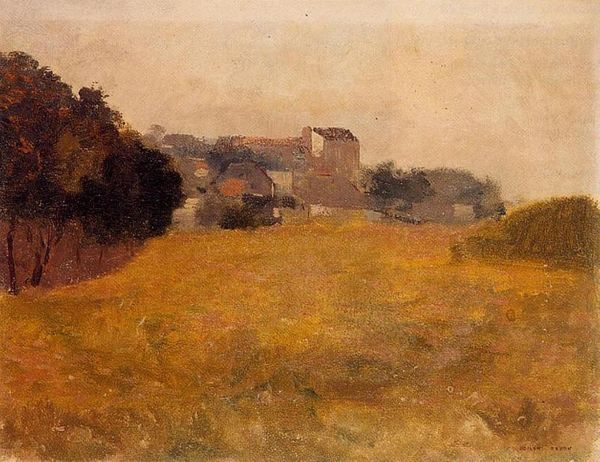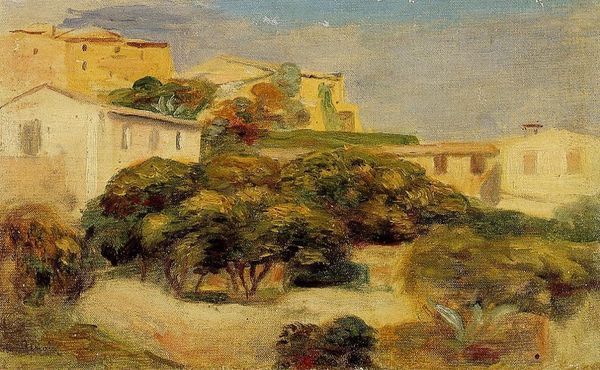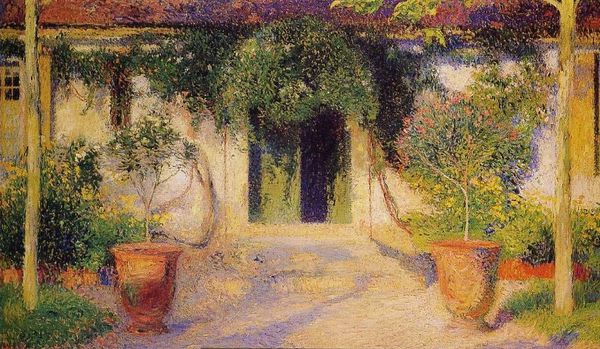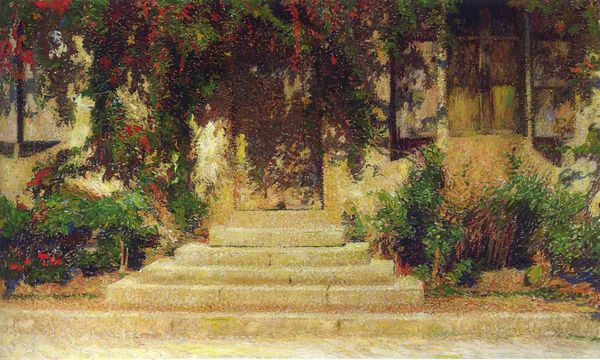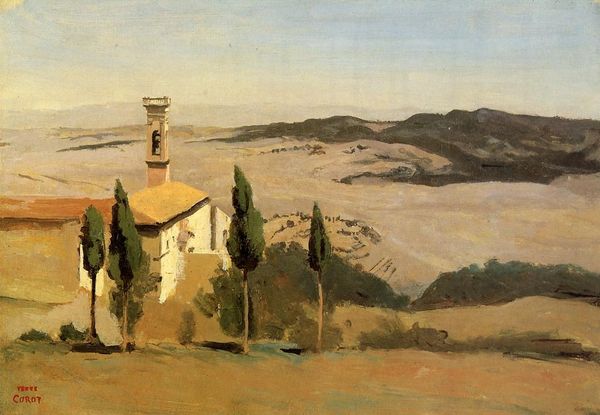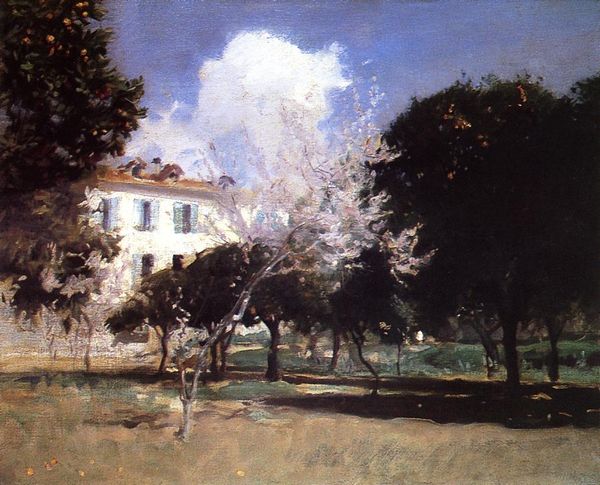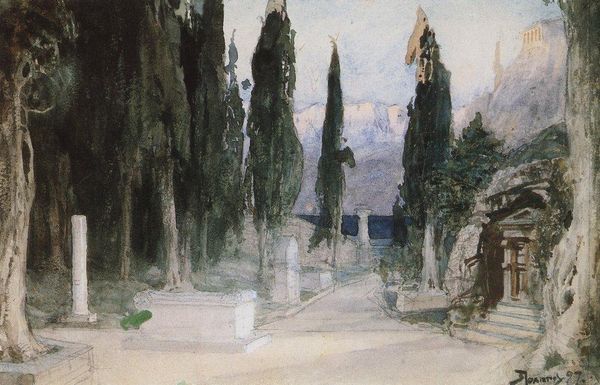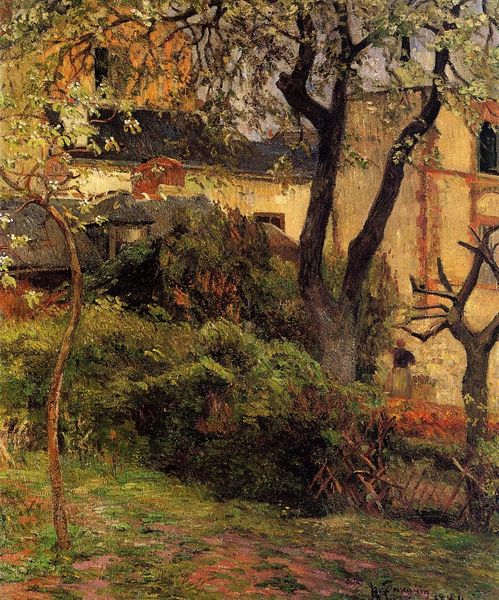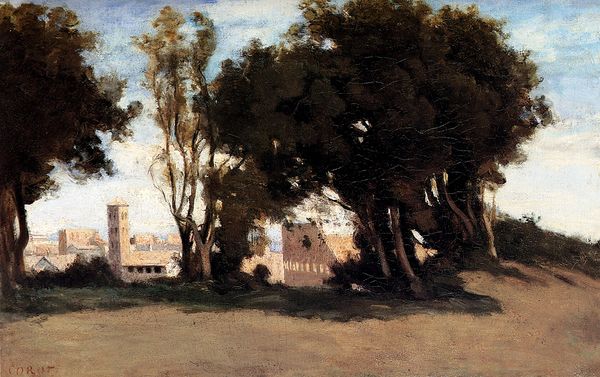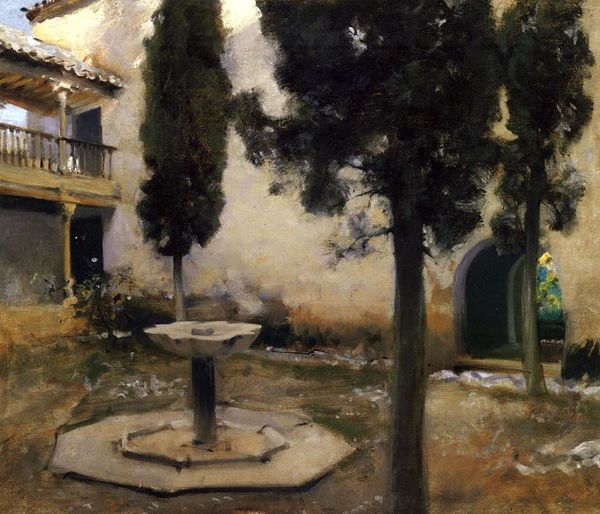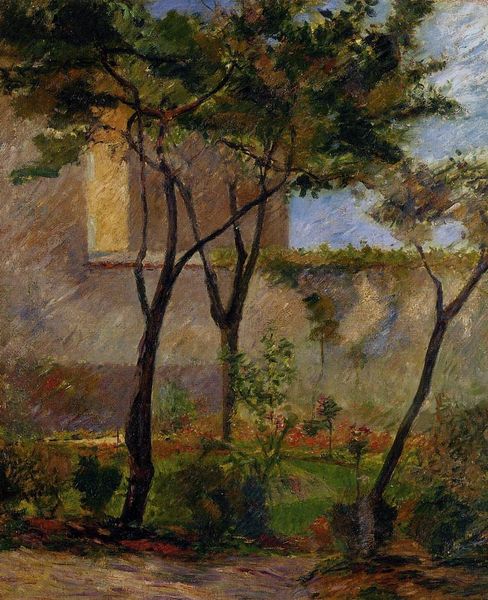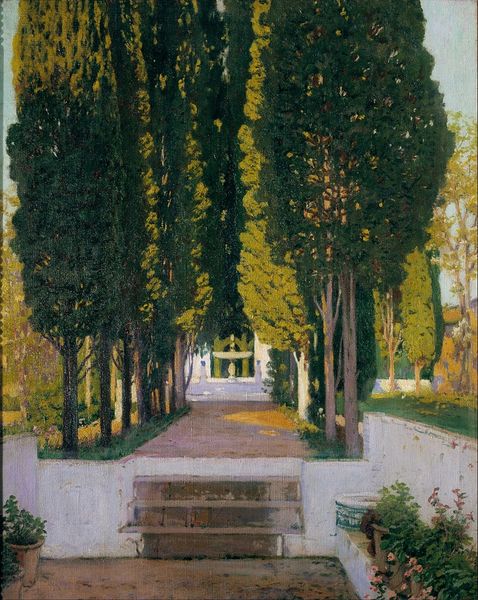
Copyright: Public domain
Editor: Here we have Santiago Rusiñol's "Vegetable Garden of the Vineyard," an 1892 oil painting. It feels very peaceful; the light is so gentle. What compositional elements stand out to you in this piece? Curator: I'm immediately drawn to the interplay between geometric forms and organic shapes. The rigid, architectural lines of the buildings are juxtaposed against the softer, more fluid lines of the vegetation. Notice how Rusiñol employs a limited palette; the muted earth tones create a harmonious whole. Editor: Yes, I noticed the colors. Do you think that palette emphasizes a certain feeling? Curator: Precisely. It serves to flatten the picture plane, pushing against a realistic rendering of depth. The restricted palette reinforces the tranquil mood, emphasizing surface over illusionism. How does the rendering of light in the painting contribute to this flatness? Editor: Well, it looks like the light softly illuminates everything, without casting hard shadows, making it less dimensional... almost like a photograph, perhaps. Curator: Good observation. Notice the lack of strong tonal contrasts. This deliberate flattening works against traditional perspective techniques. The artist uses light not to create volume, but to further unify the composition, making you conscious of the canvas itself. The whole evokes not just a place, but an exploration of color and form. Editor: I never would have thought of flatness in terms of that being unified. Thank you. Curator: It's these formal relationships that speak volumes.
Comments
No comments
Be the first to comment and join the conversation on the ultimate creative platform.
